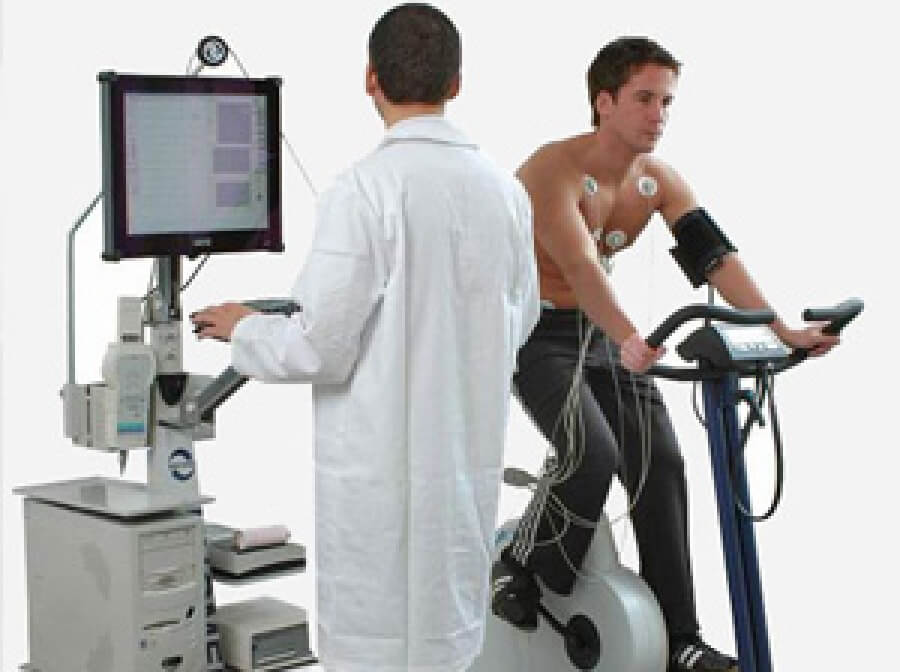Sinusoidal bradycardia
Author Ольга Кияница
2017-11-10
Sinusoidal bradycardia is more commonly known as sinus. This variant of arrhythmia is considered norm, unless the patient has a subjective intolerance to slow heartbeat. There is a violation of the rhythm for various reasons, it can be diagnosed both by adults and children.
When decreasing the heart rate compared to the lower threshold of the age norm by 15-20%, complications of varying degrees of severity may be observed.
The determination of rhythm disturbance is carried out using standard research methods (electrocardiography, ultrasound of the heart) and narrow-specific (transesophageal electrophysiological examination, coronary angiography).If after diagnosis it was determined that the patient still needs to be treated with sinusoidal bradycardia, then only with the consent of the cardiologist and using the prescribed drugs.
Video What is bradycardia and how is it treated?
Description of sinusoidal bradycardia
In normal condition, an adult is defined as 60 to 90 beats per minute. Everything below 60 indicates a slowdown in heart rate, that is, bradycardia.
Sinusoidal or sinusoidal, bradycardia is characterized by a reduced heart rate, while maintaining the rhythmicity and coordination of cardiac activity.
Slow heart rhythm occurs during sleep or rest, and this condition is considered the norm. If a person trains a lot, then the mass of the heart muscle increases, the heart acquires the ability to make strong and not so frequent releases of blood, therefore, such people, most often athletes, also observed bradycardia.
Symptoms of sinusoidal bradycardia
In most cases, there are no clinical signs. Patients with sinus bradycardia can feel this in the presence of the following symptoms:
- sensation of dizziness, expressed weakness;
- shortness of breath and feelings of impossibility to breathe fully;
- autonomic disorders in the form of appearing cold sweat, the appearance of anxiety, anxiety, panic attacks.

Causes of sinusoidal bradycardia
There are a number of conditions that can initially trigger the development of sinus bradycardia:
- strong supercooling;
- metabolic disorders against starvation;
- increased activity of the parasympathetic nervous system;
- infectious disease such as meningitis, typhus, hepatitis;
- expressed intoxication with substances and drugs;
- craniocerebral trauma, with which increases intracranial pressure;
- structural changes in the heart muscle due to the development of sclerotic and other organic lesions.
In rare cases, the illness causes the patient's discomfort, but the examination can not find the cause of a rhythm disorder. Then talk about idiopathic sinusoidal bradycardia.
Diagnosis of sinusoidal bradycardia
Different methods and methods of diagnosis are used in the diagnosis. First of all, the diagnosis should be confirmed by the results of the following studies:
- Electrocardiography - Decreased heart rate is determined against an undisturbed and coordinated rhythm.
- Holter monitoring - during the day the ECG is recorded with the help of a special device that the patient carries with him. At sinus tachycardia, changes in the rhythm during sleep, rest, after the meal can be noted.
- Electrophysiological examination - shown in the presence of anamnesis of wake states. It is also conducted with the aim of clarifying the supposed advent of rhythm disturbance.
- Echocardiography - essentially ultrasound of the heart, conducted to determine the organic lesions of the myocardium.
- Load tests are more often shown in paroxysms, but sinus bradycardia can also be performed.

During the examination of a patient, the cardiologist can appoint a doctor of related specialties. Most often - a therapist and a neurologist.
Treatment and prevention of sinusoidal bradycardia
When the first symptoms of sinus bradycardia appear, the background of which the patient's health has deteriorated, the first aid needs to be provided:
- To give a drink freshly brewed strong tea or coffee, also in a glass of water, you can drop to 15 drops of tincture of ginseng and handsome.
- Keep your feet in warm water or take a warm bath.
- Make a simple physical exercise, especially increases the pulse of walking along the stairs and a little jogging in the fresh air.
Acceptance of medications is possible only by prior agreement with the cardiologist. Drops of Zelenin are often recommended. Other drugs without proper dose selection can cause complications or exacerbations of existing diseases.
The reduction in heart rate below 35 beats / min should be corrected with the participation of the nursing staff, for which an ambulance is called.
At the pre-hospital stage, patients with extremely pronounced sinus bradycardia are assisted in the form of taking a horizontal position, offering nitroglycerin in the presence of heart pains, or isadrin, if this drug is approved by the physician.
Loss of consciousness should be eliminated with the help of an indirect heart massage and artificial respiration. In such situations, patients are necessarily taken to the hospital.
Medicinal treatment of sinus bradycardia:
- Use of injections of atropine sulfate - with pronounced signs of rhythm disturbance.
- Drop administration of isoprenaline is used for short-term cardiac arrest, as the drug is well stimulated by the activity of the heart.
- The use of glucagon, which helps to restore potassium balance after taking a number of drugs (beta-blockers, calcium antagonists), washing out the trace element from the body.
Prevention of sinusoidal bradycardia is to lead a healthy lifestyle when the rules of balanced nutrition, refusal of smoking and drinking alcohol, rational day-care regime with moderate physical activity and full rest are fulfilled. It is also important in the presence of the risk of developing a rhythm disorder every year to be examined by a cardiologist.
